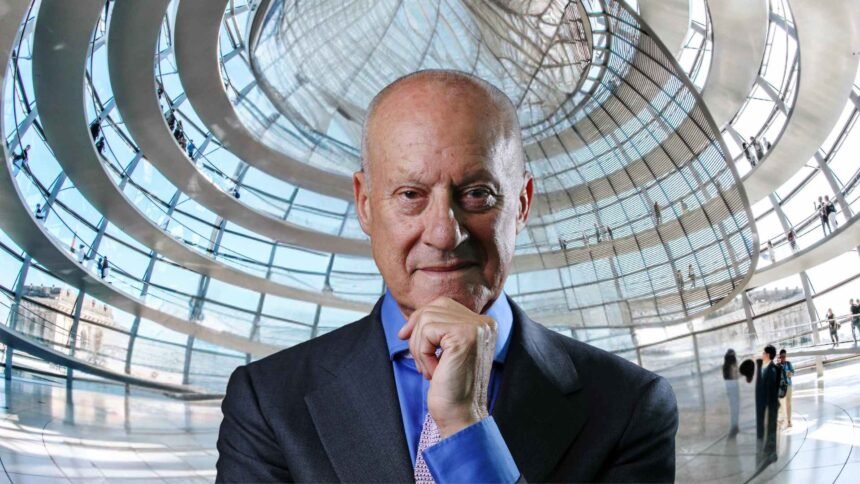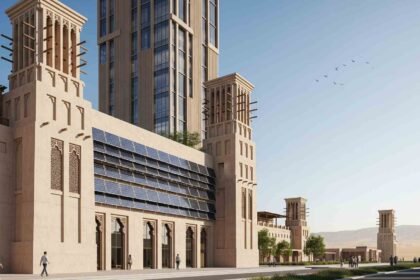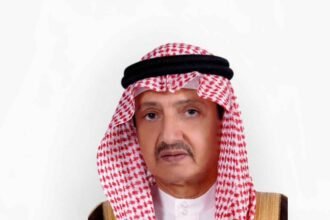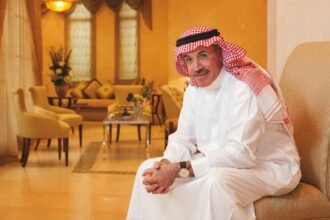Norman Foster, Baron Foster of Thames Bank, stands as a towering figure in modern architecture, celebrated for his innovative and sustainable designs that have transformed urban landscapes worldwide. Born on June 1, 1935, in Manchester, England, Foster rose from humble beginnings to establish Foster + Partners, a global architecture firm founded in 1967. His portfolio includes iconic structures like the Gherkin in London, the Reichstag in Berlin, and Apple Park in California. Foster’s work, rooted in high-tech architecture and sustainability, has earned him the Pritzker Prize, often called the Nobel Prize of architecture. His vision continues to shape cities and inspire future generations of architects.
Leaving school at 16, Foster worked as a trainee at Manchester Town Hall, serving as an office junior in the treasurer’s department. In 1953, he completed national service in the Royal Air Force, drawn by his passion for aircraft. After his service, he joined John E. Beardshaw and Partners, where his drawing skills earned him a promotion to the drawing department. In 1956, he enrolled at the University of Manchester to study architecture and city planning, supporting himself with part-time jobs like selling ice cream and working night shifts at a bakery. His dedication earned him a RIBA silver medal in 1959 for a drawing of Bourn Windmill. After graduating in 1961, Foster won a Henry Fellowship to Yale University, where he earned a master’s degree in architecture and met Richard Rogers, a future collaborator.
Founding Foster + Partners
In 1963, Foster co-founded Team 4 with Richard Rogers, Su Brumwell, and his first wife, Wendy Cheesman. The practice gained attention for its innovative designs, but it dissolved in 1967. That same year, Foster and Cheesman established Foster Associates, later renamed Foster + Partners. Starting with a small team, the firm grew into a global powerhouse with offices in cities like New York, Hong Kong, and Madrid. By 2021, it employed around 1,500 people and earned over half a billion dollars in fees by 2024, with 40% from Middle Eastern clients. Foster + Partners is known for its diverse portfolio, spanning urban master plans, public infrastructure, cultural buildings, and private residences, all grounded in sustainability and technological innovation.
Architectural Philosophy
Foster’s architectural philosophy centers on high-tech architecture, which uses advanced technology and industrial materials to create functional, aesthetically pleasing buildings. His designs often blend complex systems with natural principles, such as the Gherkin’s use of convection for ventilation. Transparency and light are key, as seen in the HSBC Main Building in Hong Kong, where all 3,500 employees enjoy views of Victoria Peak or Victoria Harbour. Foster also emphasizes community and user well-being, exemplified by the Willis Faber & Dumas headquarters, with its open-plan offices, roof garden, and recreational facilities.
His motto, “The Only Constant Is Change,” reflects his belief in adaptability and innovation. Influenced by his collaboration with Richard Buckminster Fuller on projects like the Samuel Beckett Theatre at St Peter’s College, Oxford, Foster prioritizes environmentally sensitive design. His work balances cutting-edge technology with respect for context and sustainability, setting a benchmark for modern architecture.
Key Projects
Foster’s career is defined by a series of groundbreaking projects that showcase his innovative approach. Below are some of his most iconic works:
| Project | Location | Year | Description |
| 30 St Mary Axe (The Gherkin) | London, UK | 2003 | A skyscraper known for its distinctive shape and sustainable features like natural ventilation. |
| Reichstag Building | Berlin, Germany | 1999 | Renovation with a glass dome symbolizing governmental transparency. |
| Great Court, British Museum | London, UK | 2000 | Europe’s largest covered square, transforming the museum’s courtyard into a public space. |
| HSBC Main Building | Hong Kong | 1985 | A high-tech design with raised structure for public space and maximized natural light. |
| Apple Park | Cupertino, USA | 2017 | Apple’s circular headquarters, emphasizing sustainability and renewable energy. |
| Millau Viaduct | Occitanie, France | 2004 | The world’s tallest bridge, blending engineering and aesthetic harmony. |
| Hearst Tower | New York City, USA | 2006 | Features diagrid construction for reduced material use and structural strength. |
| Stansted Airport | London, UK | 1991 | A minimalist, efficient terminal design that set a standard for airports. |
| Sainsbury Centre for Visual Arts | Norwich, UK | 1978 | An early work with a flexible, open-plan design for exhibitions. |
| Carré d’Art | Nîmes, France | 1993 | A modern art museum complementing Nîmes’ ancient Roman architecture. |
These projects highlight Foster’s ability to innovate while respecting context and sustainability.
Awards and Recognition
Foster’s contributions have earned him numerous accolades. In 1999, he received the Pritzker Architecture Prize, recognizing his transformative impact on architecture. He was knighted in 1990, appointed to the Order of Merit in 1997, and created Baron Foster of Thames Bank in 1999. Other honors include the AIA Gold Medal (1994), the Prince of Asturias Award in the Arts (2009), and the Lynn S. Beedle Lifetime Achievement Award (2007). Foster + Partners has also won the Stirling Prize, notably for the Bloomberg London building in 2018. These awards reflect Foster’s enduring influence and excellence in the field.
Legacy and Current Work
Norman Foster’s legacy lies in his transformative impact on architecture and urban design. Foster + Partners remains a leader in sustainable and innovative design, with recent projects like the redevelopment of Battersea Power Station in London and the new terminal at Beirut–Rafic Hariri International Airport. As president of the Norman Foster Foundation, established in 2017 in Madrid, Foster promotes interdisciplinary research to address future challenges in architecture and urbanism. His influence extends beyond buildings to shaping cities and communities, cementing his status as a visionary architect.
From a working-class upbringing in Manchester to becoming a global architectural icon, Norman Foster’s journey is one of vision, resilience, and innovation. His designs, from the Gherkin to Apple Park, have redefined modern architecture, blending technology, sustainability, and human-centric design. Through Foster + Partners and the Norman Foster Foundation, he continues to shape the future, leaving a legacy that will inspire architects and city-dwellers for generations to come.







